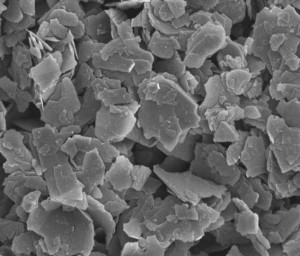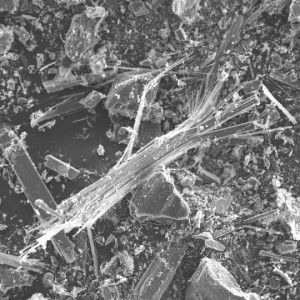There are starting to be some interesting proposal being developed that use properties of nanomaterials. This blog will cover three recent published reports relating to 1) food; 2) non-toxic graphene; and, 3) graphene for cooling electronics.
Food: In a paper in Journal of Agricultural and Food Chemistry, Researchers from Washington University (St. Louis, Missouri) [Ref. 1] present findings on a means of improving crop production by using nanomaterials. An article by UPI [Ref. 2] puts the finding in more general terms. As the requirement for additional food production increases, farmers employ more fertilizers. One of the key components in phosphorous. There are potential problems with this. When the excess fertilizer is washed from the field, it enters the waterways. As it concentrates, it aids the growth of oxygen depleting algae, which kill fish. There was also a comment that if farmers continue to use the phosphorous containing fertilizers at the current rate, there is the potential of running out of readily available phosphorous. The consequences are reduction in food supply, increase in the cost of food, and an increase in hunger. Even if it were 100 years instead of the projected 80 years, the decrease in the availability of phosphorous will have an impact on society.
The researchers created zinc oxide nanoparticles the aids plant roots increase their ability to absorb the phosphorous in the soil. The zinc interacts with three plant enzymes and enables the enzymes to convert the phosphorous into a less complex version that is easier for the plant to absorb. The zinc oxide is applied to the plant leaf; it enables the plant to absorb 11% more phosphorous from the soil. The ability to more effectively use the existing phosphorous means that less will be required to increase the plan harvesting. (This is assuming that the mechanism will work similarly with all plants, which needs to be prove.) The interesting thing about this work is that the zinc oxide is produced by a fungus. This means that there is not a need for a complex manufacturing process to produce the nanomaterial.
Non-toxic: An interesting announcement was released on April 16, 2016 by Directa Plus. [Ref. 3] In the announcement, the company stated that “all of its graphene-based products have received international certification from Farcoderm Srl (a toxicity testing agency) confirming them to be safe for human contact. The material is manufactured in Lomazzo, Italy. The company supplies material that in incorporated into sportswear and other products.
Graphene for cooling: Researchers in Gothenburg, Sweden announced the application of functionalized graphene nanoflakes-based film. [Ref. 4] The key to the process is the addition of molecules added to the surface of the material “to encourage various chemical and physical properties.” They are incorporating amino-silane molecules to improve the in-plane heat conduction. There results were published in the Journal of Nature Communications, where the full article is available. [Ref. 5] They measured significantly lower temperatures at previously identified hotspots on electronic devices. For those interested, the article contains a significant amount of detail on their understanding of the processes involved.
The impact of being able to remove heat from the circuit itself enables the more effective operation of the electronics, which should result in a longer life. However, there is a very large “if”. For this heat transfer to be effective, the heat that is transferred must be removed from the entire electronics assembly. Unless this removal occurs, the heat will remain in the entire package and result in a heat buildup. Dissipating heat from a large package is continually being worked and is an easier problem to solve than the one this concept addresses.
References:
- http://pubs.acs.org/doi/abs/10.1021/acs.jafc.5b05224
- http://www.upi.com/Science_News/2016/04/29/Nanoparticles-offer-a-boost-to-food-crop-production/9711461946901/?spt=rln&or=3
- http://www.directa-plus.com/Press/Directa%20Plus%20receives%20safety%20certifications%2021.04.16.pdf alternate access through http://www.directa-plus.com/
- http://www.upi.com/Science_News/2016/04/29/New-graphene-based-film-may-keep-your-next-laptop-cool/9781461937124/?spt=rln&or=5
- http://www.nature.com/ncomms/2016/160429/ncomms11281/full/ncomms11281.html


